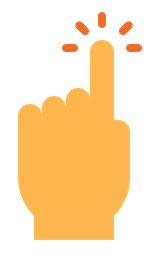Top Reasons Why Designer Tools Strive

Influencing the Production Cycle of Tooling
The cost of a tools design is affected by its design in numerous ways. First, it calculates the tool life, or even how lengthy the tool will endure before needing to be replaced. Second, it has an impact on quality and any expenses associated with poor workmanship and reworking, which add to the overall cost of the finished product. Third, tool design may influence production cycle time, allowing us to create more or less units in a given period. For these reasons, understanding the principles of tool design is critical.
Tooling design is a subset of engineering management that entails the assessment, organization, designing, development, and implementation of tools, techniques, and processes required to boost production efficiency. Metal stamping dies designs tools for you at cheap and efficient cost with best quality. Man-made mass-produced items need the creation of equipment, such as the molded die, in advance parameters in order to begin the production process.
A designer tools is a specialist who strives to engineer the original design of new machinery used during industrial production. Exercises, hatches, and small tools are examples of machinery cutting tools designed by tool designers. For tool setup development, they use geometric and algebraic formulae, as well as conventional tool data input. They also adjust tool design based on manufacturing service data or trials to optimize tool life effectiveness and longevity.
Designing tools are numerous programs that help online and graphical designers, filmmakers, and some other content creators realise their concepts and create new designs. Professionals may use these tools to create and engage with graphics, drawings, animations, and logos, as well as deliver photos to their customers in an aesthetically acceptable manner. They may be able to utilize them for gratis or just after paying a monthly fee. Some programmes pay for additional features while offering free basic ones.
Tooling Design Engineer creates new tools and improves the design
Our Tooling Design Engineer creates new tools and improves the design of current ones. You are in charge of developing tool designs and schematics. You will also establish tool requirements to guarantee efficiency and collaborate with the factory team to carry out ideas based on requirements. The tool design professional also calculates the dimensions, resources, and cost of creating completely redesigned tools.
You can also be in charge of interacting with the creative team, measuring performance, and making changes to decrease tool breakage and maintenance costs. A mechanical device engineer is a person with a creative mind. This is a fundamental need for this position. We are able to identify the most typical talents for a candidate in this role by reviewing applications. We observed that many resumes included inventiveness, listening skills, and arithmetic abilities.
The press tool design (also called as end up dying) is an assemblage comprising die, punched, punched plates, smash mounting kit, stripping plate, and other components used to manufacture sheet metal components/stamped parts from plain metal sheet. Before creating the structural steel pressing procedure Press tool, it is essential to comprehend the press tool's setup and elements. Punch/punches, Die, Punched Plates, Backing plate, Separator, pneumatic cylinders, and other group formed up the press tool.
In the structural steel pressing process, resource economy is critical. Because blanking is the initial process, the raw - materials efficiency may be influenced by selecting the most inexpensive strip arrangement that maximises material consumption. Before creating a press tool, press tool designers typically develop at least three strip configurations for computation and evaluate their material use.
Metal stamping dies provides a short-term sheet metal press tool design course that includes the metal forming process as well as press tool design. The major goal of this course is to address the challenges that are frequently ignored and incompletely known during the pressing tool process of design and production.
This necessitates the design process of a press tool and focuses on the aspects that impact the sheet metal product's formation, quality, performance, and productivity. Sheet metals are commonly associated with cutting and forming activities. The result of the rolling machine is the feedstock for metal sheet manufacturing processes.
Press tooling design: best procedure for mould
Press tooling design is a crucial aspect of the blemish procedure and one that will assist influence how effectively your bits of plastic come out. Here are a few of the essential aspects to consider when creating press equipment for your moulds. Press instrument manufacturing and design may appear frightening, but it is not anything to be afraid of. In fact, it’s a crucial skill to acquire if you want to continually improve as a designer and generating high-quality parts.
That is why we have put together the whole review of pressing tool design and manufacturing to assist you comprehend this procedure so you can consistently manufacture quality components!
Product design tools all over the world have a plethora of platforms at their disposal to help them realise their ideas. It's time to focus if you're feeling stuck and don't know what tools to utilise. It's critical to identify beneficial tools that can help you, your team, and your present (or prospective) business. We've compiled a list of some of the greatest product design tools accessible today for your convenience. We're also inclined to open-source, reasonably priced, or free materials; the more money you save, the better it is for your developing business.




